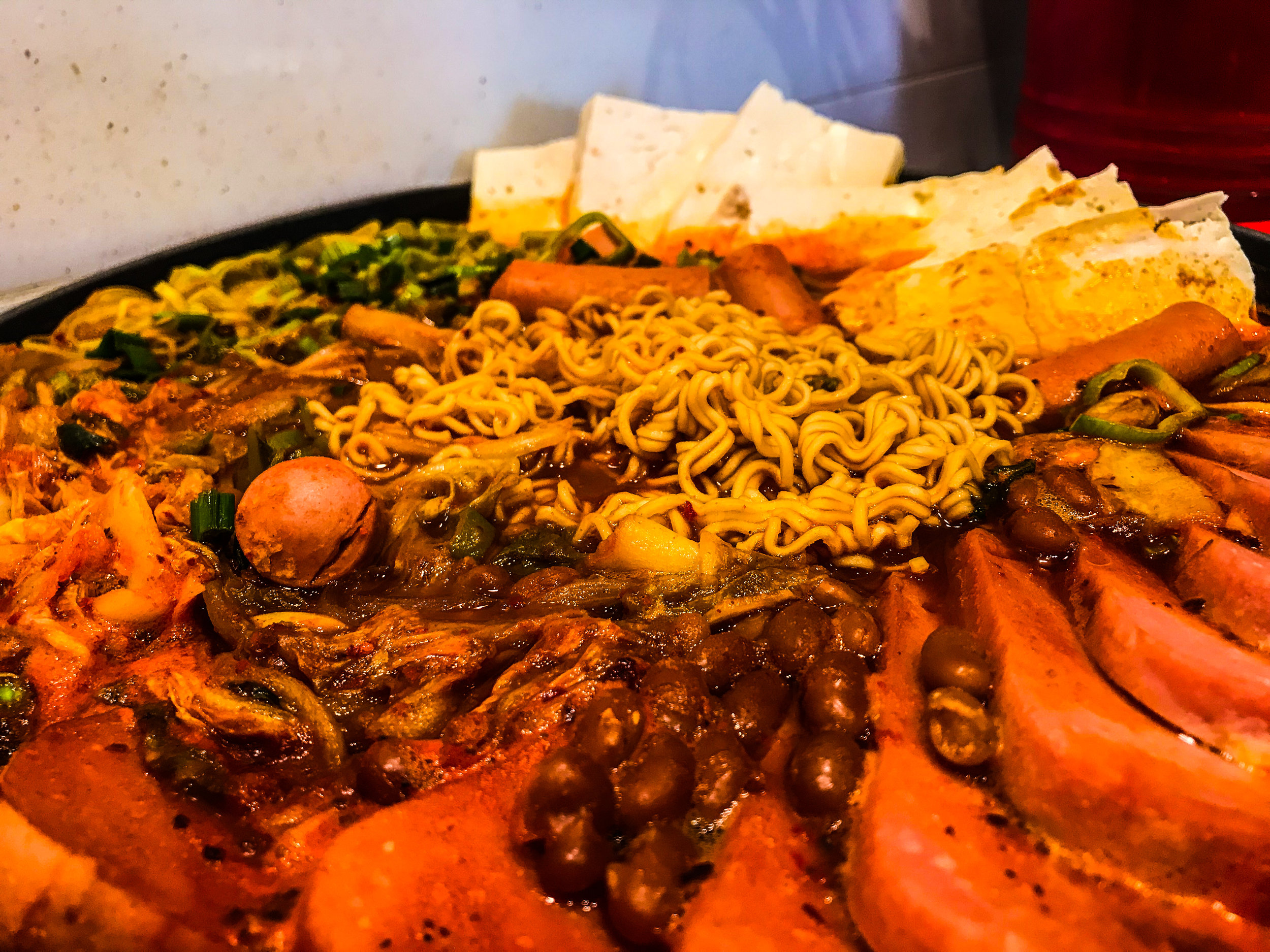BUDAE JJIGAE
BUDAE JJIGAE
#SIAintheKitchen
When I visited South Korea for the first time in 2013, I went to freakin’ town. I had accompanied my friend Carlo who was visiting his then-girlfriend at the time whom we had met on our trip to Japan just six months prior and had invited me to join him on the trip. Amidst the jjimjilbangs and countless noraebang nights, soju got the best of me and gave me the worst hangover of my entire life. I was practically bedridden for a whole day! My friends managed to help me crawl out of bed for lunch mid-day and despite my crippling hangover, I was able to indulge in the epitome of Korean comfort food: budae jjigae.
Spam, cocktail wieners, macaroni, kimchi, baked beans, instant noodles…cheese?! What may sound odd to some may sound like a mechanically-separated meat and MSG heaven! Sodium overload? Who cares! I loved this dish. So much so, that I make it at home atleast once a year.
If you didn’t know, budae jjigae literally translates to army stew. The origins of this dish goes back to World War II when the American soldiers were stationed in Korea. They had brought canned beans, luncheon meats, and Vienna sausages with them – food that was foreign in Korea. Because of this introduction, the Koreans had melded the two cultures together and cooked that into a stew, hence the name army stew.
It’s spicy, a little sweet, noodly and ultimately comforting. The recipe is completely versatile and forgivable. Different pasta shapes, noodles, pork belly, doekboekki, tofu puffs…. I based this recipe on what I had in Korea and I think it’s perfect the way it is. You can even add a little American cheese on top if you want to add extra decadence.
BUDAE JJIGAE – serves 4
4 tbsp gochujang (Korean hot pepper paste)
3 garlic cloves, minced
1 tbsp chunjang (Korean roasted black bean sauce)
1 tbsp gochugaru (Korean crushed dried chilies)
2 tsps dashi powder
½ cup water
1 can luncheon meat, sliced
1 blk soft tofu, sliced
1 leek, sliced
3 shallots, sliced
1 can Vienna sausages, drained
1 can pork ‘n beans
1 cup kimchi
3 cups water
1 pkg plain instant noodles
In a small bowl, mix the gochujang, chunjang, gochugaru, garlic, dashi powder and water to make a paste. Set aside.
In a large cast iron skillet or pan that is atleast 1 – 2” deep, assemble all of the ingredients except for the water and instant noodles. You’ll want to group each ingredients together so that it looks nice and uniform until the rface is completely covered.
Turn on the heat to medium-high and add the water and paste. Mix slowly so that it is well-incorporated.
Bring to a boil and add the instant noodles in the centre of the pan. Bring to a simmer and stir until the noodles are cooked. Serve while hot.
